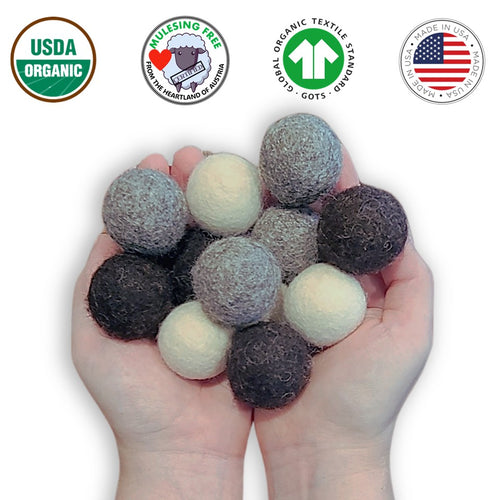Your Cart is Empty
Free 2-5 day delivery | No minimum purchase required
Free 2-5 day delivery | No minimum purchase required
Shop
Learn
Cat Hyperthyroidism: 7 Things You Should Know
 by K Marie Alto Updated
9 min read
by K Marie Alto Updated
9 min read

Today hyperthyroidism is the most frequent endocrine disease in cats and is reported to occur in 10% of cats older than ten years of age.
I recently read an article about animal health by the NY Times that made me go hmmmm. “The Mystery of the Wasting House Cats,” states:
"Forty years ago, feline hyperthyroidism was virtually nonexistent. Now it’s an epidemic – and some scientists think a class of everyday chemicals might be to blame." - Emily Anthes, The NY Times
My cat Moosie (read more about him below) was diagnosed with hyperthyroidism less than a year ago (2018) so needless to say this tagline drew me in quickly.
While the NY Times article does not discuss important topics for pet parents such as symptoms of hyperthyroidism in cats, observable signs your cat is dying of thyroid disease, or if / when to euthanize a cat with hyperthyroidism, I would encourage you to read the whole article.
For pet parents looking for more cat care guides, make sure to not miss the read further section all the way down at the bottom. My blog is packed 📚 with resources.
In this log post I discuss y things you should know about feline hyperthyroidism. From risk factors to possible causes to how to diagnose it. The section about toxicological studies will change the way you buy cat toys forever.
Editor's Note: 'Cat Hyperthyroidism: 7 Things You Should Know' was originally written in 2018. We update this post periodically to reflect changes in techniques, new recommendations, and because I am always learning new things! Happy learning and sharing.
Let's dig in!
Table of Contents
What is Cat Hyperthyroidism?
Cat hyperthyroidism is a disorder caused by excessive thyroid hormone. The thyroid is composed of two glands located on either side of the trachea in the neck.
The thyroid is responsible for producing hormones that help regulate many things, including metabolism.
When the thyroid becomes enlarged and produces too much of the thyroid hormone, you then have a condition call hyperthyroidism or an overactive thyroid.
The increase in thyroid size is caused by a tumor, but the good news is around 98% of the tumors are benign.
The enlarged thyroid will produce excess hormones, which begin to affect other bodily systems, but we’ll get into more detail in a bit.
Read More Cat Care Guides
- Is Your Cat Needy? 5 Ways to Care for Overly Clingy Cats
- Cat Colds: How to Treat and Take Care of a Cat with a Cold
- Lump Check: When to Be Concerned About Your Cat's Health
- Cat Teeth Brushing 101: Everything You Need to Know
- Quick Guide: Identifying the Cause of Swollen Cat Paws
- Cat FAQ: What is a Normal Resting Heartbeat for a Cat?
Risk Factors
Some of the key risk factors for a cat developing hyperthyroidism include:
Spending time indoors, using cat litter, eating canned food, eating fish-flavored canned food, eating liver-and-giblet-flavored canned food, drinking puddle water, sleeping on the floor, sleeping on bedding treated with flea-control products, and living in a home with a gas fireplace.
“Older cats are at greater risk for developing hyperthyroidism. Environmental risk factors have been investigated and may predispose some cats to hyperthyroidism, although the specific mechanisms are not known. Exposure to high levels of dietary iodine may cause susceptible cats to develop hyperthyroidism.” - VCA Animal Hospitals
Additionally, while no individual cat breeds are known to have a greater risk, some breeds appear to show less incidence of hyperthyroidism relative to others.
Theses breeds include Siamese, Burmese, Persian, Abyssinian, and Himalayan.
Read More Cat Care Guides
- Is It Normal for a Cat's Nose to Be Wet or a Cause for Concern?
- Increased Urination and Thirst in Cats: What to Look Out For
- Understanding Feline Infectious Peritonitis (FIP) in Cats
- Treating Heartworm in Cats: The Pet Parent's Handbook
- Stinky Breath: Why Does My Cat's Breath Stink and Is It Normal?
- Should I Brush My Cat or Do They Clean Themselves?
Toxicological Studies
According to the New York Times, research shows a possible correlation between hyperthyroidism and a class of flame retardants known as polybrominated diphenyl ethers (PBDEs).
Beginning in the 1970s, large amounts of these chemicals were being added to household goods (carpet padding, sofa cushions, electronics, etc.) to make them less flammable.
The problem is, according to the EPA these chemicals are dangerous.
“PBDE congeners are persistent, bioaccumulative, and toxic to both humans and the environment. The critical endpoint of concern for human health is neurobehavioral effects.” - EPA
PBDE was only banned in the US in 2004, so many of the items in your home are likely still contaminated.
A study was also performed by Indiana University in 2013 that found these chemicals were in the blood of babies, and it was higher than that of their mother’s.
“Considering, that these chemicals have been banned for more than a decade now, I was expecting to see lower exposure levels.”- Amina Salamova Indiana University research scientist
Pretty scary right?
Here’s another piece to the puzzle. These flame retardants are also present in any cat, dog, and even baby plush toys coming from China.
Plush cat toys made in China are constructed and stuffed with polyester. To make polyester toys “safer,” they are coated with toxic flame-retardant chemicals.
I’m sure this is now news to you as the toxicity of cat and dog toys made in China has been widely documented worldwide.
How do you make sure that your cats’ plush toys are non-toxic then? A good solution is to avoid plush cat toys made in China altogether.
I know this may sound easier said than done. Especially when all the commercially available cat toys on the largest eCommerce platforms come from China.
The best advise I can give you is to invest in high quality, 100% safe and nontoxic organic certified cat toys made in the USA.
The keywords above are "organic certified" and "made in the USA." Beware of self-proclaimed dog and cat organic products that lack reputable third party endorsements such as GOTS or The USDA.
Possible Causes
PDBEs leach from our household goods and attach to dust coating the insides of our homes. PBDEs have also been found in several types of cat food, especially seafood-flavored canned foods.
In a small study done by Birnbaum and Dye in 2007, of the 23 cats tested, their blood showed PBDE levels of 20 to 100 times the amount typically found in American adults.
Read More Cat Care Guides
- How to Keep Your Cat Still While Trimming Nails
- FAQ: Can CBD Oil Help Calm Cats with Situational Anxiety?
Researchers at the California Department of Toxic Substances Control recently identified more than 70 different compounds that seem to be present in especially high concentrations in hyperthyroid cats.
Clinical Signs
Before I start listing a bunch of symptoms, it’s worth noting that the changes can be indicative of other health conditions.
Cats afflicted with hyperthyroidism usually develop a variety of signs that may be subtle at first but that become more severe as the disease progresses. - The College of Veterinary Medicine at Cornell University
Since hyperthyroidism causes an increase in the metabolism, you might notice your kitty is hungrier, and even though they are eating, they are losing weight. Increased thirst is also a common sign.
Because excess thyroid hormone can affect kidney function, increased urination may be noted.
Keep an eye out for behavioral changes. New vocalization, particularly at night can also be a sign. Restless behavior can also be seen along with a change in their coat.
Some cats may also experience diarrhea and/or vomiting.
Read More Cat Care Guides
- How to Buy Catnip for Cats
- FAQ: Can You Give Cats Human Grade CBD Oil?
- Common Questions and Clever Ways to use Catnip
How to Diagnose Hyperthyroidism in Cats
For most cats, hyperthyroidism can be easily diagnosed with a blood test. As I mentioned above, the symptoms of hyperthyroidism can overlap with many other conditions, so diagnosis is going to require a vet visit.
When you make the appointment, come armed with all the changes you’ve noticed so your vet can perform only the tests needed to confirm a diagnosis.
When your vet performs the physical exam, s/he will feel for an enlarged thyroid in the neck and will perform a blood test to confirm the suspicion.
Treating Hyperthyroidism in Cats
Left untreated, hyperthyroidism can lead to hypertension. This level of constantly high blood pressure can lead to blindness and damage to the heart and kidneys.
Another complication of untreated hyperthyroidism is thyrotoxic cardiomyopathy a type of heart disease. Additional tests may need to be performed to determine the extent of the impact and your kitty’s best treatment option.
The good news here is that they are several treatment options, only two of which cure the disease and your veterinarian will tell you which options are available for your kitty.
Non-curative options:
As the name suggests, non-curative options do not eliminate the tumor, they simply interfere with the ability of the thyroid to produce excess hormones. As such, these treatment options will need to be continued for the remainder of your kitty’s life.
You can expect more frequent blood draws until your kitty gets stabilized on the treatment option selected.
- Dietary Management. A prescription diet low in iodine has the potential to reduce excessive levels of thyroid hormone, but it may not be enough to reduce it to a normal level.
- Medication. Felimazole (methimazole) is an oral prescription used to treat hyperthyroidism. It’s usually given twice a day and the dosage may need to be adjusted from time to time depending on how your kitty’s thyroid hormone level responds. As with any medication, side effects are possible, so monitoring will be necessary to ensure the medicine can be safely continued.
Curative options:
- Surgery. Removal of one or both lobes of the thyroid can cure your kitty of this disease. This could require one or two surgeries to complete, and because most kitties are older when diagnosed, this option may be off the table because of other health risks. Here’s the thing about this option, some cats have thyroid cells in other locations, so it’s possible this won’t be the cure you’re expecting. Be sure to talk to your doctor about additional tests that can be done to rule out ectopic thyroid tissue.
- Radioactive Iodine Therapy (I-131). Ok, this one sounds a bit scary, but it is actually a fairly non-invasive process, and one of the big benefits is it’s a cure that doesn’t require anesthesia! The radioactive iodine is actually given as an injection. It goes to work by destroying the tumor leaving the other organs unaffected. Most cats can be treated with one injection. The downside of this option is that your kitty will need to remain hospitalized for a week or two until the radiation levels have decreased to a safe level. This procedure is also usually only performed at a specialized clinic, so it may not be an option depending on where you’re located.
Cost will likely be a contributing factor when deciding on which option to proceed with. The non-curative options will have a lower upfront cost, but they will continue for the remainder of your kitty’s life.
The curative options are going to have a large upfront cost, though many places will offer financing options.
If you want to save up for a “cure,” talk to your doctor about potentially starting oral medication first. This is common for those opting for immediate curative options as additional tests and time for scheduling may take weeks to complete.
Our Experience with Feline Hyperthyroidism
Moosie had all the classic symptoms, the first of which I noticed was huge clumps of urine in the litterbox.
I suspected something immediately because of his age (16) and because his two sisters are quite a bit smaller, it was much more noticeable.
As I began watching him more closely over the coming days, I began to see him visiting his water fountain more often.
Moosie had always been a voracious eater, so really no obvious change there, but because I weigh him regularly, I was able to see he was slowly losing weight. I knew it was time for a vet visit.
His diagnosis was fast, a simple blood panel showed an elevated T4 and he was immediately started on methimazole.
While the option of radioactive iodine was a treatment option, and we do have a location in the area, it’s a lot of money to spend up front, and as noted above, it’s possible a second dose could be needed.
In the end we decided the best option for our Moo was to go the oral medicine route. He tolerated the medicine well and it was able to get his thyroid hormone back to a normal level.
Conclusion
While the findings in the NY Times article are not definitive, and it’s entirely possible that other factors play a role in the increased prevalence of hyperthyroidism in cats, I think it’s worth keeping in mind.
I often think about the cleaning products we use in our homes since our kitty’s walk and lay on these surfaces and then groom ultimately consuming these chemicals.
However, I never thought there could be harmful chemicals in my furniture, that would not only affect my cats, but also the humans in my home.
The good news is hyperthyroidism isn’t a death sentence and can be well managed with medicine or even cured with surgery or I-131 treatment.
With that said, remember to always bring your kitty for their annual checkup. You may not notice the subtle changes in weight or eating habits, but bloodwork often catches diseases early before they can cause further damage.
Does your cat currently have any thyroid disease symptoms? Have they ever been diagnosed? What treatment option did you try and how is it working out?
One more thing, if you are feeling like getting a little special something for your fur baby that is unique, made right here in the USA, 100% pup and cat safe, USDA certified organic and brought to you by a US company, check out Toe Beans online pet supplies store!
K Marie Alto
K. Marie is an animal lover, wife, kitty mom, dog auntie, writer, and co-founder of Toe Beans, a proud American family-owned online boutique pet supplies store focused on the improvement of the life of furry family members via pet parent education, better products, and advocacy. She has over 20 years of experience as a pet momma. She loves sharing her personal journey and experience as a pet parent via her blog and Facebook page where she currently has more than 50K followers (@furrytoebeans) and counting :-). Read more
Leave a comment
Comments will be approved before showing up.
Also in Pet Parents Blog by Toe Beans

The Guide to Dog Enrichment Toys for a Happier Pup
by K Marie Alto April 17, 2025 8 min read
Learn how enrichment toys can keep your dog happy and healthy, providing mental and physical stimulation even when you're not home in this comprehensive guide.

Techniques To Stop Your Cat from Begging While Eating
by K Marie Alto April 10, 2025 10 min read
Learn how to manage your cat's begging behavior during meal times with effective techniques that enhance comfort and ensure their safety, as well as yours.

The Truth Behind Zeus, The World’s Largest Great Dane
by K Marie Alto April 03, 2025 10 min read
Learn about Zeus, a gentle giant and therapy dog who holds the record as the world’s tallest Great Dane, showcasing his lovable nature and impressive stature.
Related Products

Cat Ball Toys | Handmade in the USA with 100% Undyed Austrian Wool
$20.99

Cat Beds | The SnugRug
$11.95

Cat Books | Cat Grooming 101 | eBook Format
$4.99
Recent Articles
- The Guide to Dog Enrichment Toys for a Happier Pup April 17, 2025
- Techniques To Stop Your Cat from Begging While Eating April 10, 2025
- The Truth Behind Zeus, The World’s Largest Great Dane April 03, 2025
- Bengal Cat Guide: History, Health, and Personality Traits March 27, 2025
- How Can You Stop Your Dog from Licking Their Paws? March 20, 2025
- Why You Should Invest in Automatic Pet Water Fountains March 13, 2025
- Guide: The Ultimate List of Fruits That Your Dog Can't Eat March 06, 2025
- Is Your Cat in Heat? The Signs and What You Should Know February 27, 2025
- Dog Spay Surgery: What Symptoms Can You Expect After? February 19, 2025
- DIY Tips for Making Healthy Homemade Cat Food Recipes February 13, 2025
